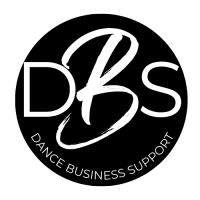When it comes to charging people for online dance classes while ensuring that only paying participants have access, you have two primary options to choose from. You can either fully integrate payment processing with admission control or manually reconcile payments and access. In this article, we will explore both these options and the strategies available for each.
Fully Integrated Payment Management
1. Use a Learning Management System (LMS)
Learning Management Systems (LMS) like Teachable, Thinkific, or Moodle provide an excellent option for online dance instructors. These platforms offer built-in payment processing and access control features. You can restrict access to your course materials until a participant has paid.
Using a dedicated LMS platform is a popular choice for many dance instructors as it offers features specifically designed for online course creation and management.
2. Subscription-based Platforms
3. Video Conferencing Tools
Live online dance classes have gained popularity, and platforms like Zoom, Google Meet, and Microsoft Teams offer payment integrations. You can charge participants before the class and provide access through the meeting link.
4. eCommerce and Membership Plugins
For dance instructors with their own websites or blogs, eCommerce plugins like WooCommerce (for WordPress) or third-party plugins like MemberPress allow you to set up paid memberships and restrict access to your online classes.
5. Online Course Marketplaces
Consider selling your classes on platforms like Udemy, Coursera, or Skillshare, which handle payment processing and access control for you. Keep in mind that these platforms may take a percentage of your earnings.
Manually Manage Memberships Through Provision of Links
Online Payment Processors
Utilize online payment processors like PayPal, Stripe, or Square to receive payments for your classes. Once a payment is confirmed, you can manually provide access to the class materials or use a membership plugin to automate this process.
Below are some of the platforms you can send links to once you have taken payment.
1. Private Social Media Groups
2. Content Delivery Services
3. Email Access
Send course materials directly to participants via email after they’ve paid. This method works best for smaller classes or one-on-one lessons.
4. Password-Protected Website
If you have a website, create a password-protected section for your paying customers. Share the password with them after they’ve paid.
Many dance instructors create their websites with password-protected sections for their paying customers. This approach offers more control and customization over the learning experience.
Remember to clearly communicate your payment and access policies to your prospective participants. It’s also important to set up a reliable customer support system to assist with any payment or access issues that may arise. Additionally, ensure that your chosen method complies with relevant laws and regulations, such as GDPR for data privacy or VAT for tax collection, depending on your location and the location of your customers.
The choice of method depends on your specific goals, your target audience, and your preferred business model. For example, if you want to offer a comprehensive dance course with structured lessons, an LMS may be the best choice. If you prefer live, interactive classes, video conferencing tools could be more suitable. Many instructors use a combination of methods to reach a broader audience and provide different types of content and engagement.
It’s essential to research the platforms and methods that align with your teaching style and business objectives. Additionally, consider factors like payment processing fees, accessibility, and the technical skills required to implement your chosen method effectively.







